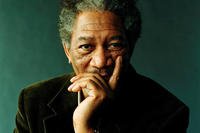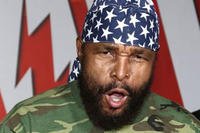Earlier this week, Military.com broke the news that Defense Secretary Pete Hegseth directed the secretary of the Navy to rename the USNS Harvey Milk. Hegseth's decision to do so during Pride Month was reportedly intentional: The USNS Milk commemorates the life of the Navy veteran and LGBTQ+ rights activist.
After Military.com's reporting, CBS confirmed the defense secretary's plans and listed seven other naval ships who honor civic leaders and activists that would also be renamed. The USNS Milk is a John Lewis-class oiler; more than half of the currently named ships in the class are slated for renaming, although there are no reports to rename the USNS John Lewis, USNS Earl Warren, USNS Robert F. Kennedy or USNS Sojourner Truth. In addition, two ships from the Lewis and Clark class that have been in service for more than a decade have also been singled out for renaming.
Here are the stories of those ships' namesakes:
Harvey Milk (USNS Harvey Milk, T-AO 206)
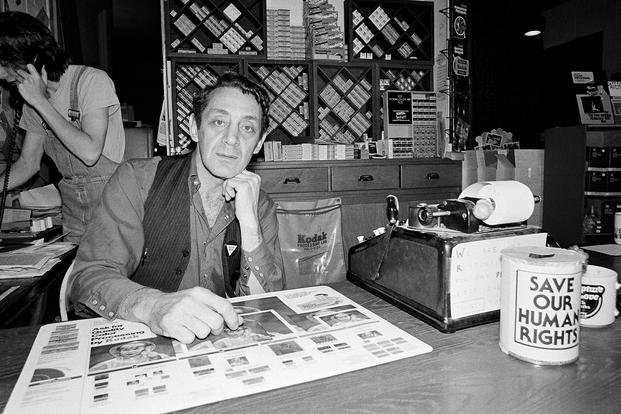
A noted gay rights icon and activist, Harvey Milk is known for his work in the 1970s to advance civic reforms that affected a wide cross-section of his constituents, including LGBTQ+ people, women, racial and ethnic minorities, and the working class. Milk's successes included stopping a statewide initiative in California mandating the firing of all gay public school teachers, building unlikely coalitions of organizations and people, and advocating strongly for LGBTQ+ people to come out and end the "conspiracy of silence."
Milk served in the U.S. Navy Reserve as a diving officer and saw action in the Korean War. His military records list him as "a good leader," "outstanding" and "very good officer material." Milk was forced to resign or be court-martialed after accusations of homosexuality and is listed with an "other than honorable" discharge. Later, when given the option to have Milk's discharge changed, his family refused, his nephew saying the designation would "teach our history to prevent ourselves from going backwards and repeating it."
Milk spent less than a year in office before he was assassinated by a fellow San Francisco city supervisor on Nov. 27, 1978. After his death, thousands of people around the country mourned him through spontaneous demonstrations and heeding some of his last words -- to live life uncloseted.
Lucy Stone (USNS Lucy Stone, T-AO 209)
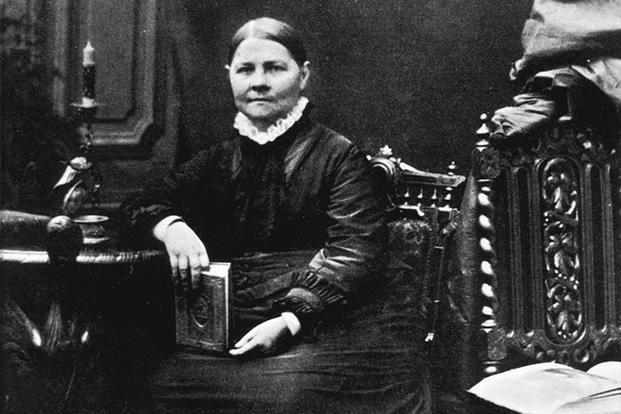
The granddaughter of a veteran of the American Revolution, Lucy Stone was an ardent abolitionist and suffragist in the 19th century. As a young woman, Stone sought a formal education at a time when it was all but impossible for American women. She overcame institutional and interpersonal sexism to ultimately earn her degree from Oberlin College in Ohio.
Stone was a gifted orator and writer who used her talents to argue for women's rights and the abolition of slavery. Attacked at least once by a mob of men and heckled often during her speeches, Stone persevered. She organized the first National Women's Rights Convention in 1850, which called for "equality before the law without distinction of sex or color," and the New England Women's Tea Party in 1873, which met to protest women's taxation without representation. She co-founded the Women's National Loyal League, which promoted emancipation and voting rights for all Black Americans, and the American Woman Suffrage Association.
Throughout her life, Stone's words and ideas gained an international audience, and she became a thought leader and beacon of freedom for people around the world.
Dolores Huerta (USNS Dolores Huerta, T-AO 214)

Originally a bilingual teacher, Dolores Huerta left teaching to organize for worker rights in the 1950s, saying, "I quit because I couldn't stand seeing kids come to class hungry and needing shoes. I thought I could do more by organizing farm workers than by trying to teach their hungry children." Huerta co-founded a chapter of the Community Service Organization. She later founded the Agricultural Workers Association. Along with Cesar Chavez and Gilbert Padilla, she founded the National Farm Workers Association, which became the United Farm Workers.
Huerta has spent her life organizing boycotts, strikes and protests, advocating for worker, immigrant and women's rights and lobbying for better labor and Hispanic representation in politics. She is noted to be the driving organizing and negotiating force behind the Delano Grape Strike and Boycott, which began in 1965 and ended five years later. It successfully won safer working conditions and health and education benefits for grape harvesters. Huerta is credited with the phrase "Sí, se puede!" ("Yes, we can!"), which was first a United Farm Workers slogan and later a popular rallying cry for progressive activists.
The 95-year-old Huerta is the only ship namesake of those slated to be renamed who is alive.
Thurgood Marshall (USNS Thurgood Marshall, T-AO 211)
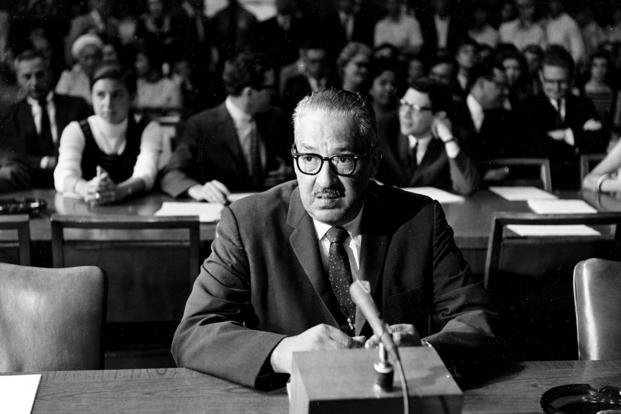
Born and raised in Baltimore, Thurgood Marshall's name has become synonymous with the legal fight for civil rights in America. As the lead counsel for the NAACP's Legal Defense and Education Fund, he argued some of the most impactful civil rights cases of the 20th century in front of the Supreme Court.
As a lawyer, Marshall won 29 of the 32 cases he argued in front of the nation's highest court. Perhaps most famously, Marshall won "Brown v. Board of Education" in 1954, in which the Supreme Court struck down "Plessy v. Ferguson" and its "separate but equal" doctrine, clearing the way for the integration of public schools.
Appointed to the Supreme Court by President Lyndon B. Johnson in 1967, Marshall became the first Black associate justice in American history and sat on the bench for 24 years. He was a staunch supporter of civil rights for all people, abortion rights, affirmative action, the First Amendment, Miranda rights and the Constitution as a "living document."
This week, CBS News reported that an article about the USNS Thurgood Marshall's future keel laying had been deleted from a Department of Defense website.
Ruth Bader Ginsburg (USNS Ruth Bader Ginsburg, T-AO 212)

Appointed by President Bill Clinton in 1993, Ruth Bader Ginsburg served as a justice of the Supreme Court for 27 years. Serving on the nation's highest bench as the second woman and first Jewish woman capped a resume full of achievements, including co-founder of the American Civil Liberties Union's Women's Rights Project, judge for the United States Court of Appeals for the District of Columbia Circuit and the first woman tenured at Columbia Law School.
Ginsburg also was a military spouse. When her beloved husband, Marty, was called up for service at Fort Sill, she took a break from her law studies at Harvard and joined him in Oklahoma for his two-year commitment. Years later, her legal prowess was instrumental in ending the military's forced abortion policy. As a justice, she authored the majority opinion for United States v. Virginia, which found Virginia Military Institute's males-only admissions policy was unconstitutional.
Harriet Tubman (USNS Harriet Tubman, T-AO 213)

Born into slavery in the 1820s, Tubman freed herself by trekking from Maryland to Philadelphia. Despite a head injury from an enslaver that gave her bouts of narcolepsy, seizures and chronic pain, Tubman made at least 13 more round trips on foot through dangerous areas, helping to directly free at least 70 enslaved people. She aided an additional 70 who were seeking freedom independently by sharing information. At one point, the bounty for her capture was more than $1.5 million in today's currency.
During the Civil War, Tubman served with the Union Army as a spy, scout and nurse. In 1863, after successfully gathering information behind enemy lines, Tubman was the first U.S. woman to "lead a major military operation." Known as the Combahee Ferry Raid, she and 150 Black soldiers freed more than 700 enslaved people, destroyed property and goods and delivered a blow to morale across the Confederacy in one night. She didn't lose a single soldier in the raid.
Originally denied a military pension, she was eventually given a nurse pension after the war and was buried with military honors. Thirty-one years after her death, the SS Harriet Tubman was christened in 1944, the first naval ship to bear her name.
Cesar Chavez (USNS Cesar Chavez, T-AKE 14)

When Cesar Chavez's parents lost their farm during the Great Depression, they joined hundreds of thousands of others and became migrant farmworkers, following the seasons and work around the West. The family lived in a car or makeshift tent, and everyone -- including the children -- worked in the fields to make ends meet. These experiences would later inform Chavez's labor organizing.
Chavez believed in nonviolent methods such as strikes, fasts, boycotts and protests to advance labor rights. He, Gilbert Padilla and Dolores Huerta founded the United Farm Workers to fight for humane working conditions, fair pay and issues that affect laborers.
A Navy veteran, Chavez joined in 1946, served two years in the Pacific and was discharged honorably. Chavez's wife, Helen Fabela, was the sponsor and four out of his five daughters were matrons of honor for the ship's christening ceremony in 2012.
Medgar Evers (USNS Medgar Evers, T-AKE 13)

A son of Mississippi, Medgar Evers dropped out of school and joined the Army during World War II, shipping out to Western Europe in a segregated unit. He served as a member of the famed Red Ball Express. He was honorably discharged in 1945, returning home having experienced a Jim Crow-less continent and determined to fight injustice in the states.
Evers spent the rest of his life as a civil rights activist. He is best known for his work as the NAACP's first field officer in Mississippi. His many accomplishments in that role include organizing efforts to integrate schools and public spaces, leading boycotts against businesses with racist policies and helping grow grassroots activism in the state through voter registration drives and NAACP chapter planting.
In 1963, Evers' home was firebombed. That same year, he was assassinated in his carport by a white supremacist. Evers was buried at Arlington National Cemetery with military honors. In March 2025, his story was included in President Donald Trump's DEI purge and was deleted from the cemetery's website. The removal was met with public backlash. (At least one reference to Evers remains visible on Arlington's website as of this writing.)
Evers' wife and his daughter attended the 2011 christening of the USNS Medgar Evers as sponsor and matron of honor, respectively. At the ceremony, Myrlie Evers spoke to the crowd, saying of her late husband's legacy, "I will not have to go to bed ever again wondering whether anyone will remember who Medgar Evers is."
Want to Know More About the Military?
Be sure to get the latest news about the U.S. military, as well as critical info about how to join and all the benefits of service. Subscribe to Military.com and receive customized updates delivered straight to your inbox.













